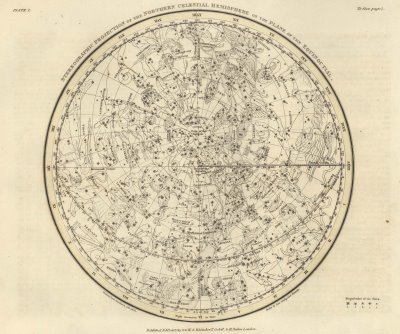
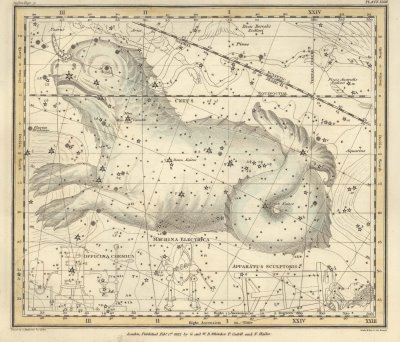
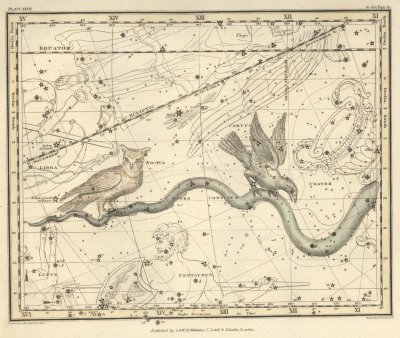

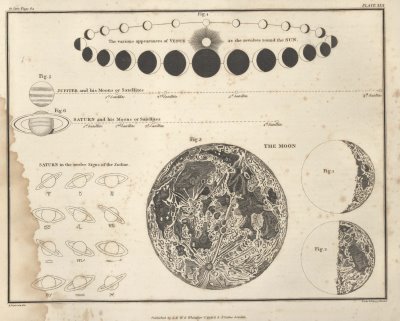

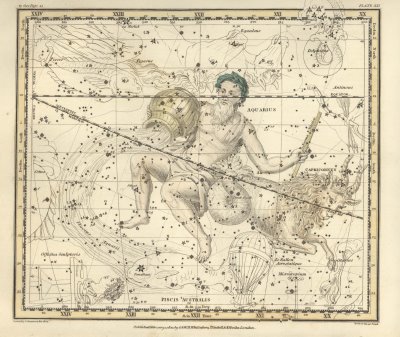
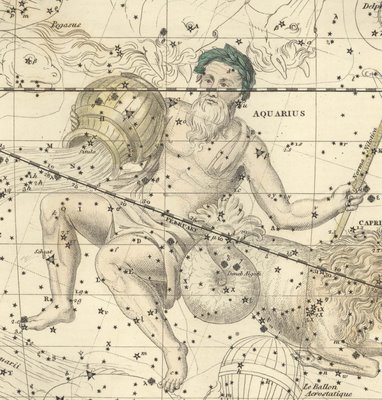
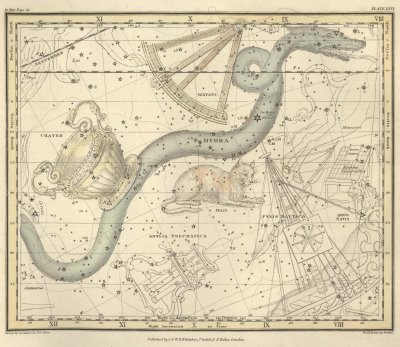


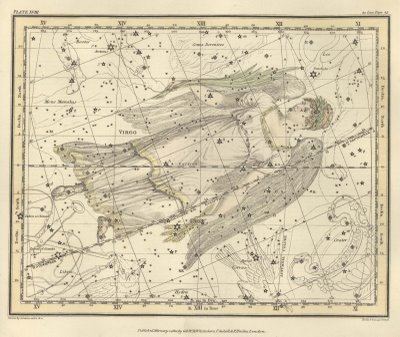

The most important contributors in the history of printed celestial cartography were Bayer (1603), Hevelius (1690), Flamsteed (1729) and Bode (1801). They each produced renowned star atlases that combined the latest contemporary scientific knowledge with outstanding artistic craftsmanship.
Johann Elert Bode's 'Uranographia' (b & w; colour) provided the model for the 1822 publication by amateur British astronomer, Alexander Jamieson: 'A Celestial Atlas Comprising a Systematic Display of the Heavens in a Series of Thirty Maps' which is available in high resolution format at the US Naval Observatory (or click on the above images for a medium enlargement). Jamieson was of course insistent that his atlas improved upon Bode's work.
The subtle hand-coloured engravings in 'A Celestial Atlas' marked a transition from a celestial map style that included elaborate renderings of mythological figures to a less artistic and more scientific approach. The forms of the constellation zodiacs that had begun in ancient Greece were minimised or phased out over time in favour of more accurately detailed illustrations.
- A Brief History of Printed Star Atlases.
- Ian Ridpath's 'Star Tales'.
- A set of cards, 'Urania's Mirror' was inspired by Jamieson's atlas.
These are great. The subtle coloring is very interesting -- I have several books full of these and have gotten used to seeing them in (doubtlessly hyped-up) shades of celestial blue. Wonderful post!
ReplyDeletebeautemous. i lovelovelove the starmaps. urania's mirror cards are new to me, though. thank you!
ReplyDeletegl. at scarlet star studios
Please help me - where to get larger versions of Jameison Celestial Atlas pictures? The detail of Aquarius is good enough..
ReplyDeleteThank you!
Cheers!
ReplyDeleteMandarilo - click here for large scans
That's wonderful, thank, you!
ReplyDeleteJust saw it in your book and couldn't help looking for more... makes me think about some works by Kiki Smith.